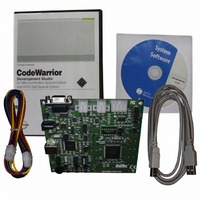DEMO9S12XEP100 Freescale Semiconductor, DEMO9S12XEP100 Datasheet - Page 601

DEMO9S12XEP100
Manufacturer Part Number
DEMO9S12XEP100
Description
BOARD DEMO FOR MC9S12XEP100
Manufacturer
Freescale Semiconductor
Type
MCUr
Datasheet
1.EVB9S12XEP100.pdf
(1328 pages)
Specifications of DEMO9S12XEP100
Contents
Board, Cables, CD
Processor To Be Evaluated
MC9S12XEP100
Data Bus Width
16 bit
Interface Type
RS-232
Silicon Manufacturer
Freescale
Core Architecture
S12
Core Sub-architecture
S12
Silicon Core Number
MC9S12
Silicon Family Name
S12XE
Rohs Compliant
Yes
For Use With/related Products
MC9S12XEP100
Lead Free Status / RoHS Status
Lead free / RoHS Compliant
Available stocks
Company
Part Number
Manufacturer
Quantity
Price
Company:
Part Number:
DEMO9S12XEP100
Manufacturer:
PANASONIC
Quantity:
46 000
Company:
Part Number:
DEMO9S12XEP100
Manufacturer:
Freescale Semiconductor
Quantity:
135
- Current page: 601 of 1328
- Download datasheet (9Mb)
The IIC interrupt is enabled by the IBIE bit in the IIC control register. It must be cleared by writing 0 to
the IBF bit in the interrupt service routine.
15.7
15.7.1
15.7.1.1
Reset will put the IIC bus control register to its default status. Before the interface can be used to transfer
serial data, an initialization procedure must be carried out, as follows:
15.7.1.2
After completion of the initialization procedure, serial data can be transmitted by selecting the 'master
transmitter' mode. If the device is connected to a multi-master bus system, the state of the IIC bus busy bit
(IBB) must be tested to check whether the serial bus is free.
If the bus is free (IBB=0), the start condition and the first byte (the slave address) can be sent. The data
written to the data register comprises the slave calling address and the LSB set to indicate the direction of
transfer required from the slave.
The bus free time (i.e., the time between a STOP condition and the following START condition) is built
into the hardware that generates the START cycle. Depending on the relative frequencies of the system
clock and the SCL period it may be necessary to wait until the IIC is busy after writing the calling address
to the IBDR before proceeding with the following instructions. This is illustrated in the following example.
An example of a program which generates the START signal and transmits the first byte of data (slave
address) is shown below:
Freescale Semiconductor
CHFLAG
TXSTART
IBFREE
Because of an order from the United States International Trade Commission, BGA-packaged product lines and partnumbers
indicated here currently are not available from Freescale for import or sale in the United States prior to September 2010
2. Byte transfer condition (TCF bit set)
3. Address detect condition (IAAS bit set)
1. Update the frequency divider register (IBFD) and select the required division ratio to obtain SCL
2. Update the ADTYPE of IBCR2 to define the address length, 7 bits or 10 bits.
3. Update the IIC bus address register (IBAD) to define its slave address. If 10-bit address is applied
4. Set the IBEN bit of the IIC bus control register (IBCR) to enable the IIC interface system.
5. Modify the bits of the IIC bus control register (IBCR) to select master/slave mode, transmit/receive
6. If supported general call, the GCEN in IBCR2 should be asserted.
frequency from system clock.
IBCR2 should be updated to define the rest bits of address.
mode and interrupt enable or not.
Application Information
IIC Programming Examples
Initialization Sequence
Generation of START
BRSET
BSET
BRCLR
IBSR,#$20,*
IBCR,#$30
IBSR,#$20,*
MC9S12XE-Family Reference Manual Rev. 1.23
;WAIT FOR IBB FLAG TO CLEAR
;SET TRANSMIT AND MASTER MODE;i.e. GENERATE START CONDITION
;WAIT FOR IBB FLAG TO SET
Chapter 15 Inter-Integrated Circuit (IICV3) Block Description
601
Related parts for DEMO9S12XEP100
Image
Part Number
Description
Manufacturer
Datasheet
Request
R
Part Number:
Description:
Manufacturer:
Freescale Semiconductor, Inc
Datasheet:
Part Number:
Description:
Manufacturer:
Freescale Semiconductor, Inc
Datasheet:
Part Number:
Description:
Manufacturer:
Freescale Semiconductor, Inc
Datasheet:
Part Number:
Description:
Manufacturer:
Freescale Semiconductor, Inc
Datasheet:
Part Number:
Description:
Manufacturer:
Freescale Semiconductor, Inc
Datasheet:
Part Number:
Description:
Manufacturer:
Freescale Semiconductor, Inc
Datasheet:
Part Number:
Description:
Manufacturer:
Freescale Semiconductor, Inc
Datasheet:
Part Number:
Description:
Manufacturer:
Freescale Semiconductor, Inc
Datasheet:
Part Number:
Description:
Manufacturer:
Freescale Semiconductor, Inc
Datasheet:
Part Number:
Description:
Manufacturer:
Freescale Semiconductor, Inc
Datasheet:
Part Number:
Description:
Manufacturer:
Freescale Semiconductor, Inc
Datasheet:
Part Number:
Description:
Manufacturer:
Freescale Semiconductor, Inc
Datasheet:
Part Number:
Description:
Manufacturer:
Freescale Semiconductor, Inc
Datasheet:
Part Number:
Description:
Manufacturer:
Freescale Semiconductor, Inc
Datasheet:
Part Number:
Description:
Manufacturer:
Freescale Semiconductor, Inc
Datasheet:











